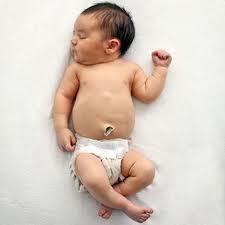Umbilical cord care: Basics for a New Mom
 A baby’s newly cut umbilical cord can be an entry point for bacteria, which can lead to cord infection and potentially life-threatening sepsis. You can prevent any infection that can arise from an umbilical cord by taking good care in the initial days. A new mom need to be careful and prevent infection to the baby.
A baby’s newly cut umbilical cord can be an entry point for bacteria, which can lead to cord infection and potentially life-threatening sepsis. You can prevent any infection that can arise from an umbilical cord by taking good care in the initial days. A new mom need to be careful and prevent infection to the baby.
At birth babies are born with a high level of Anti-body like proteins called immunoglobulin (IgG), which are important for keeping babies free from bacterial and viral infections. However, these drop over the first two to three months of birth making them prone to infections. It is only at around three months your child will start to developing his own antibodies, but at a much slower rate than adults. Therefore babies are at high risk when exposed to external conditions, therefore lot of importance is given for umbilical cord care and preventing infection.
Why does your baby have an umbilical cord stump?
During pregnancy, the umbilical cord supplies nutrients and oxygen to your developing baby in the womb through the placenta, which is connected to the inner wall of the mother’s uterus. The placenta is connected to your baby by the umbilical cord through an opening in the baby’s abdomen. After your baby is born, the umbilical cord is no longer needed and therefore clamped and cut close to the body in a painless procedure, leaving a 2 to 3 cm short umbilical stump.
Your baby will not feel any discomfort during this procedure as the umbilical cord does not contain pain-sensitive nerve fibers.
How long will your baby have an umbilical cord stump?
Your baby’s umbilical cord stump will dry up and eventually fall off within 10 to 21 days. The color of the umbilical cord will change to black and will then fall off. There will be a fresh wound and it will take a few days to heal.
Umbilical cord care: Basics for a New Mom
How to take care of the Umbilical cord stump?
You need to take good care of the umbilical cord area. This area is delicate and will need a little extra attention until the cord stump naturally falls off . Follow the below steps:
- Keep the stump clean. Earlier parents were instructed to swab the stump with rubbing alcohol after every diaper change. Doctors now advise to leave the stump dry without applying any antiseptic lotion, the stump might heal faster if left alone. If the stump becomes dirty or sticky, clean it with plain water — then dry it by holding a clean, absorbent cloth around the stump or fanning it with a piece of paper.
- Keep the stump dry. Expose the stump to air to help dry out the base of the umbilical cord. Avoid covering the stump with diaper or clothes. Keep the front of your baby’s diaper folded down . In warm weather, dress your baby in a diaper and short top shirt to improve air circulation. Avoid contact with urine especially for the boy babies, place diaper in the right position. Avoid usage of dry cotton wool as the fibers left in the area can cause irritation to your baby’s delicate skin and may lead to infection.
- Continue with sponge baths. Sponge baths might be most practical during the healing process. When the stump falls off, you can bathe your baby in a baby tub or sink.
- Let the stump fall off on its own. Do not pull off the umbilical cord stump even if it is hanging on by only a thread. Resist the temptation to pull off the stump yourself.
How to identify if there is an infection?
When the umbilical cord is naturally healing, it’s natural to see a little dried blood near the stump. Contact your baby’s doctor if the child develops fever or if the umbilical cord area:
- Appears red and swollen at the base of the cord
- A foul odor coming from the cord
- Yellowish pus or discharge coming from the cord
- Continuous bleeding observed (although slight bleeding often occurs at the time of separation).
If you sense an infection or any of the above symptoms, prompt treatment should be administered to stop the infection and get your little baby back to normalcy.
Related posts:









